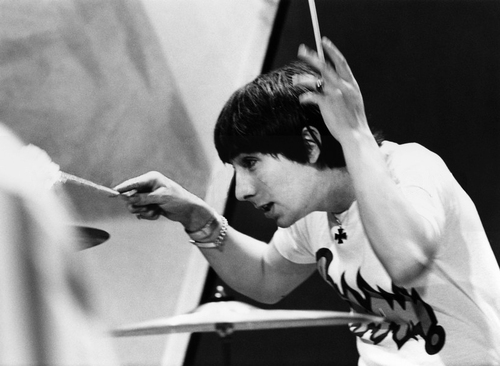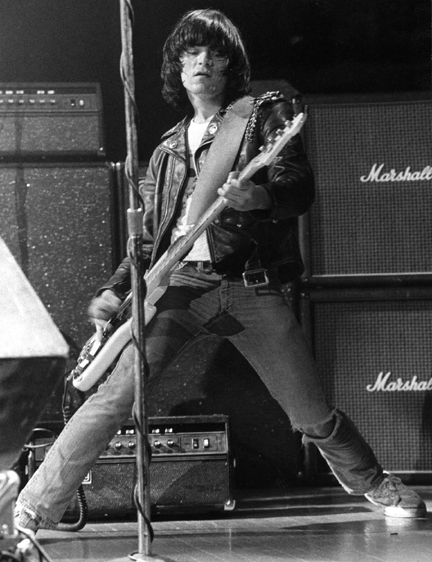I stink at math, but I am confident in my belief that John Doe‘s bass stance from this X performance meets the ideal angles (ie, crotch-to-feet triangle, feet-relative-to-shoulder width, etc) that all bassists should emulate. May I request that one of the Hall’s mathematicians calculate the angles that make up this ideal bass stance? I was really hoping that Letterman would ask Doe about his stance. This research will benefit other bassists in learning and adopting this proper bass stance? Thank you.


A drummer worth watching.
A few years ago we promised to examine the stage stances of rock musicians by instrument, beginning with a mostly likely eventually groundbreaking piece on bassists. I don’t think we ever took this series any further…until now.
You hear the phrase that a great performer is “larger than life.” For rock musicians, that larger than life pose is literally grounded in the musician’s basic stance. Everything the musician does from that initial stance—be it swaying to the music, keeping time with his or her foot, placing a foot on the monitor, punching the air with a sweaty fist—flows from that initial stance, or gesture. You might find it curious that we’re rebooting this series with an examination of the stance of drummers, since few drummers actually stand up in the first place. However, I encourage you to think of a drummer’s stance in broader terms, that is, as the drummer’s presence from behind his or her kit. A distinctive drummer “stance” can add a lot to one’s enjoyment of a band’s live performance.
There’s no “right” stance, although as we examine the rock stances of various musicians, we may argue that there are “wrong” stances. I wouldn’t put it past us. It is highly likely, throughout the course of this series, that we’ll overlook an important stance. Please don’t hesitate to add to this base of knowledge. In fact, I am incapable of doing this survey justice alone.
In the coming weeks we will examine the stage stances of rock musicians by instrument. So often you hear the phrase that a great performer is “larger than life.” For rock musicians, that larger than life pose is literally grounded in the musician’s basic stance. Everything the musician does from that initial stance – be it swaying to the music, keeping time with his or her foot, placing a foot on the monitor, punching the air with a sweaty fist – flows from that initial stance.
There’s no “right” stance, although as we examine the rock stances of various musicians, we may argue that there are “wrong” stances. I wouldn’t put it past us. I had planned on beginning this series with the archetypal stances of guitar players, but then I feared that at least one key bass guitarist stance would be overshadowed. For this reason we’ll begin our survey with a discussion of the main stances of rock bassists. It is highly likely, throughout the course of this series, that we’ll overlook an important stance. Please don’t hesitate to add to this base of knowledge.


Over the last 30 years, Dee Dee Ramone‘s classic wide-legged punk rock stance has risen in prominence and respect among electric bassists and their fans, although it is not practiced as much as preached. According to Dee Dee’s theorem, the bassist’s legs should form an isosceles triangle with the stage, with the apex at a 70-degree angle. Although there is no “right” stance, Rock Town Hall highly recommends a wide-legged stance for all standing musicians, regardless of instrument.
Although Clash bassist Paul Simonon is most frequently associated with a near-isosceles triangle stance while smashing his bass on the cover of London Calling, Simonon’s signature stance was the Machine Gun Shimmy, as seen in the following video.
Continue reading »

